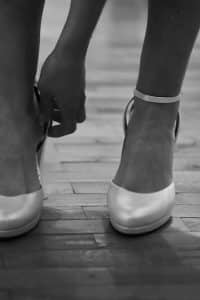Home Physio Advice for Ankle Sprains
Ankle sprains are incredibly common, especially for those of us living in rural areas like Norfolk and Suffolk, where uneven ground, outdoor work, and the occasional slip-up can lead to painful injuries. A severe ankle sprain can be more than just a minor inconvenience; without proper care and rehabilitation, it can lead to lingering pain, weakness, and even further injury down the line.
As a home physio, I’ve worked with many people who’ve been surprised by how much difference the right exercises can make in their recovery. This guide will take you through some key exercises you can do at home to rehabilitate your ankle, whether you’re on a farm, in a cottage, or even just enjoying your garden.
Disclaimer: This guide offers general advice on exercises for severe ankle sprains. It’s always important to get a personalised assessment and treatment plan from a professional, especially if your sprain is particularly severe.
Understanding Severe Ankle Sprains
What is a Severe Ankle Sprain?
Severe ankle sprains (Grade 2 and 3) involve significant ligament damage, causing pain, swelling, bruising, and difficulty walking. If you’ve ever rolled your ankle on a molehill or slipped on some wet leaves, you’ll know it’s not just about the initial pain—it’s the recovery that can be the real challenge.
When to Start Exercising?
Before diving into exercises, you need to give your ankle some time to heal. Typically, the first 72 hours should focus on rest, ice, compression, and elevation (RICE). Once the swelling has gone down and you’re feeling more comfortable, it’s time to start gentle rehabilitation exercises. Always consult a healthcare provider before starting any new exercise routine, especially with severe injuries.
Essential Exercises for Ankle Rehabilitation
Rehabilitation exercises can be broken down into stages, beginning with gentle movements and working up to more advanced strengthening and balance work. These exercises can be done easily at home with minimal equipment, such as resistance bands, towels, and sturdy chairs.
- Early Stage: Regain Range of Motion
The first step is to gently restore movement to the ankle without putting too much strain on it.
Ankle Circles
Sit comfortably with your leg elevated. Slowly move your foot in a circle, first clockwise, then counterclockwise. This exercise helps maintain flexibility in the joint. I’ve seen clients start to notice more movement after just a week of regular ankle circles.
Alphabet Writing
This one’s a bit more fun—use your big toe to trace the alphabet in the air. Not only does it keep things interesting, but it also works on a range of motion without stressing the injured area too much.
- Intermediate Stage: Strengthen the Ankle
Once the initial pain has subsided and movement is improving, it’s time to start strengthening the muscles around the ankle.
Towel Scrunches
Place a towel flat on the floor and use your toes to scrunch it towards you. This helps build up the smaller muscles in your foot and lower leg. You might feel a bit silly doing it, but it’s surprisingly effective! A client once told me she did these while watching her favourite show, and it quickly became part of her routine.
Resistance Band Flexion and Extension
Using a resistance band, wrap it around your foot and gently pull it towards you for flexion, then push away for extension. This is a fantastic way to start building strength in the ankle without putting full weight on it.
- Advanced Stage: Balance and Proprioception
Rebuilding your balance is crucial, especially if you’re out and about on uneven ground. These exercises help your body recognise how to position your foot correctly, reducing the risk of future sprains.
Single-Leg Stand
Stand on your injured leg and try to maintain balance. Use a chair for support if needed. As you progress, try doing this without holding on, or even with your eyes closed for an extra challenge.
Heel-to-Toe Walking
Walk in a straight line, placing your heel to the toe of the opposite foot with each step. This exercise helps improve your stability and control, both of which are essential for everyday activities.
Top Tips for a Successful Recovery
- Consistency Matters: It’s not about doing a lot all at once but regularly engaging in the exercises. Set aside a little time each day, and you’ll see progress.
- Listen to Your Body: It’s normal to feel some discomfort, but if you feel sharp pain, stop immediately.
- Stay Patient: Recovery from severe sprains isn’t a quick fix. You might have good days and bad, but gradual improvement is the key.
Avoiding Common Mistakes
Don’t Rush Back to Full Activity
It’s tempting to get back to your usual routine quickly, but pushing too hard too soon can lead to setbacks. A friend of mine ignored her rehab exercises after feeling “good enough” and ended up with another sprain just weeks later.
Don’t Skip Balance Training
Strength is great, but without good balance and coordination, you’re more likely to sprain your ankle again. Proprioception exercises are just as crucial as strengthening ones.
Practical Advice for Home-Based Physiotherapy
For rural homeowners, these exercises can be adapted easily using everyday items. A towel can replace fancy gym equipment, and a sturdy chair can be your best balance aid. Even on rainy days, you can keep up with your rehab in the comfort of your living room.
Conclusion
Rehabilitating a severe ankle sprain takes time and effort, but with the right approach, you can restore strength, mobility, and confidence in your ankle. Remember, everyone’s recovery journey is unique, so it’s crucial to get a personalised assessment to ensure you’re on the right path.
If you’re struggling with a sprain and would like more tailored guidance, why not get in touch? As specialists in home physiotherapy across Norfolk and Suffolk, we’re here to help you every step of the way. Whether it’s private home physiotherapy or a personalised session at your convenience, we’re just a call away from helping you get back on your feet safely and confidently.


